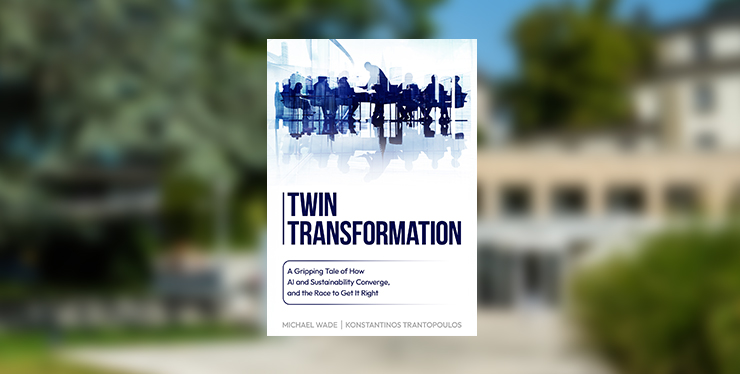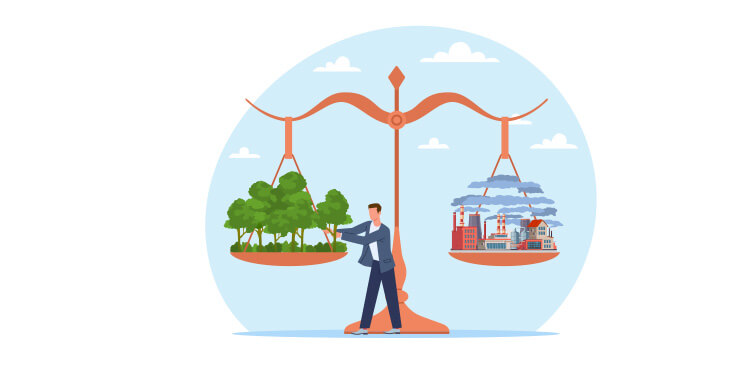
Pension funds around the world are grappling with how to integrate environmental, social and governance (ESG) issues into their investment allocations without sacrificing financial returns.
This was the thrust of a webinar led by Professor Vanina Farber, elea Chair of Social Innovation and Gert Dijkstra, Senior Managing Director of APG Asset Management (APG AM), that appeared live on Wednesday July 29th at 11am CEST.
The conversation dives deep into the nuances of sustainable finance, where investment strategies may exclude certain industries or companies that violate specific norms or regulations.
Alternatively, integrative approaches still are increasingly taken up by investors, adding weight to companies that do well at including ESG factors into their business models.
While this strategy is potentially more difficult, as it requires investors to proactively engage companies, the approach has greater intentionality.
In this webinar, Dijkstra illustrates how APG AM, a company with over €540 billion assets under management, approaches sustainable investing to generate competitive financial returns: above-7%-average absolute return over the past 20 years.
APG AM has a unique mandate in that it manages assets on behalf of four pension funds in the Netherlands, signifying 4.5 million participants; a number that equates to roughly one in five citizens in the Netherlands.
The two large pension funds that own APG AM are also their two biggest clients. Being part of society, “our large clients want to be very visible in the Netherlands,” says Gert Dijkstra.
“Investing in the Netherlands is important for our Pension fund clients, being an integral part of society.”
Sustainable investing and returns: a tense relationship?
Professor Farber initiated the webinar with two polls asking participants if they wanted their pension fund to adopt a sustainable investment strategy and if they would be willing to forego returns to use a sustainable investing strategy.
While nearly all participants wanted their pension fund to adopt a sustainable strategy (83%), only 55% of them responded they would still prefer their pension fund to apply a sustainable investing strategy if it meant sacrificing returns.
Marrying ESG considerations and financial returns is particularly important for asset managers with pension funds as clients.
Describing APG AM’s added value, Dijkstra explains that for every €100 paid out today in pensions, €18 comes from the employer’s contribution, €7 from the employee’s contribution and €75 is investment return.
Ultimately a question of empirical inquiry, Gert Dijkstra responded that in the case of APG AM, there is no tension between responsible investing and returns based on performance thus far.
In the last twenty years, the asset manager has been able to deliver returns of nearly 7%.
Looking ahead, Dijkstra said there would be a need to manage the expectations of certain clients and participants, although this is not a result of ESG considerations.
“It’ll be extremely challenging to come up with the same returns in the coming decade because we are in an extremely low-interest era. There is a lot of money competing for the sound investments so valuations are relatively high.”
Dijkstra added: “We have been preparing our clients for lower returns than in the last two decades.”
Increasing client demand for ESG metrics in investment decisions
In APG AM’s case, “we have to seek responsible and sustainable investing opportunities in an active manner because of the targets set by our clients,” says Gert Dijkstra.
He explains that clients in fact dictate the quantitative targets for responsible investments, while “not giving us any room to decrease returns.”
Although the inclusion of ESG factors changes the investment universe available to APG AM, Dijkstra is confident in APG AM’s ability to meet these constraints, saying “We strongly believe we can build sustainable and responsible investment portfolios, while keeping sound levels of risk-returns.”
Investment beliefs: incentives to investing responsibly and sustainably
With long-term time horizons being a key strategic advantage of pension funds in comparison to other investors such as commercial asset managers, Gert Dijkstra outlines the “investment beliefs” that underpin APG AM’s strategy to responsible and sustainable investing.
Those willing to invest first will receive a premium. The long-term horizon offers additional opportunities for returns, in which APG AM has a “buy and hold” strategy, usually over 15-20 years.
“In comparison to most traditional private equity firms, we don’t need to sell off companies after five to seven years if we don’t want to,” says Dijkstra.
“At the end of the day, we are interested in long-term cashflows, which we can give to our clients so they can pay out pensions.”
Investing early on: the key to being proactively engaged in responsible investing
Traditionally, investors would wait for a business plan and then make a finance decision on whether to invest, says Gert Dijkstra.
In some of APG AM’s asset classes, Dijkstra explains how their involvement began at a very early business development stage. This is particularly the case for APG AM’s real estate portfolio.
APG AM invested in a chain of hotels started in the Netherlands, Citizen M, when the business was more or less an idea on a drawing board.
A second example is APG AM’s investment in Westfield Shopping Center in London, where APG AM’s involvement began well before construction even began and buildings still stood on the site.
“As an investor, where we traditionally took a more passive role, we seek an advantage in being far more entrepreneurial and active,” says Dijkstra.
Integrating sustainable investing into all asset classes: can it be done?
Gert Dijkstra says the easy answer is yes. Looking at APG AM’s asset mix, they are broadly split into three categories: fixed income, equities and alternative investments.
Fixed income amounts to approximately 39% of assets under management, equities are roughly 35% and alternative investments make up the remaining 26%.
In fixed income, “If you look at the different asset classes, within credits and treasuries there are increasingly issuances of green bonds,” says Dijkstra.
With the French and Belgian governments leading green bond issuances and the Dutch government getting involved in this area a year ago, green bonds are becoming more and more popular and are typically related to sustainable projects.
Another asset class involving responsible investing for APG AM is real estate.
In this domain, APG AM helped to establish a sustainability benchmark called GRESB (global real estate sustainability benchmark), which allows investors to assess investment opportunities based on water and energy consumption reduction.
Decision-making in sustainable investing: passive exclusion vs. proactive inclusion
“We have four angles in our decision-making, which are return, risk, cost and sustainability,” says Gert Dijkstra. Dijkstra added, “A decade ago, from the ESG perspective, we would’ve been looking mainly at exclusion.”
Exclusion means deliberately excluding specific countries, industries or companies that do not meet ESG criteria, such as the tobacco industry or companies that performed badly on governance metrics.
“You see a development now in which we move towards inclusion,” says Dijkstra. “While we’re in the early stages of this journey, we have developed a framework in which we consider the entire structure investment universe as sustainable and responsible.”
He explains how leaders, laggards and those on the exclusion list form this investment universe. Companies that are on the exclusion list are the easiest to consider as the investment decision is simply not to invest.
“What’s far more challenging is finding the leaders and laggards in terms of sustainable and responsible entrepreneurship.”
According to the APG AM model, working with leaders in sustainable and responsible firms leads to inclusion if the risk-return analysis results in an attractive offer for investment.
Laggards are currently the most difficult to work with as a number of criteria need to be met prior to investment.
Similar to leaders, APG AM first analyses the risk-return profile of firms in this group to evaluate potential investment.
However, laggards also need to demonstrate clear pathways to ESG integration and improvement. If there are limited opportunities for engagement, it is unlikely they will receive investment.
Post-crisis and future opportunities
In response to a closing question from a participant, Gert Dijkstra outlined his perspective on the post-COVID-19 world and the role of sustainable institutional investors.
“From what I see, sustainability is getting an increasingly important role in business planning in companies.”
Professor Farber ends the webinar with closing remarks on the post-crisis world which she observes “…is already seeing the financial sector much more willing to collaborate with corporates to speed up change and transform business models.”
“We are happy to be a part of creating this reality here at the elea Center for Social Innovation, as we convene corporates, investors, entrepreneurs and NGOs that want to further this agenda.”
It might be time to look inward and ask yourself: is my company a laggard? If so, is our access to financial markets at risk? Do we have a clear path to transform? Can I drive change to create a more sustainable future for my company, society and the environment? Let’s #BuildBackBetter
To find out more about upcoming webinars from the elea Center for Social Innovation, please visit the Center’s page here.









